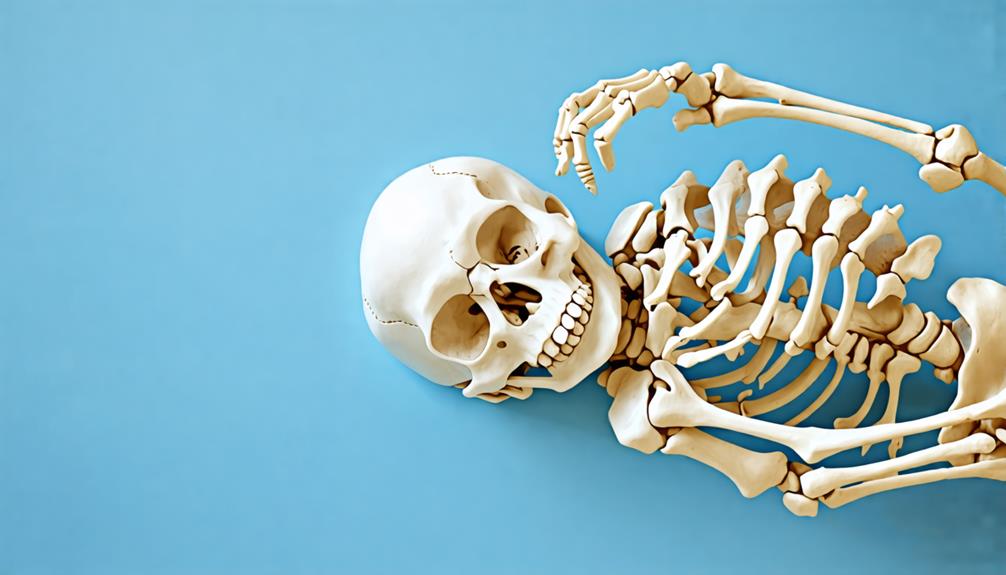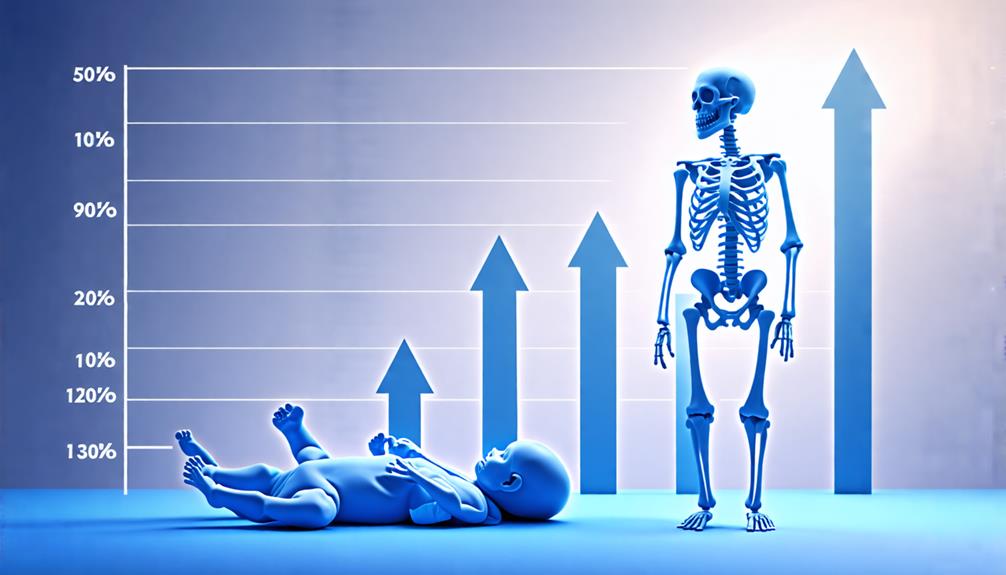You might be surprised to learn that newborns have nearly 100 more bones than adults. This fascinating fact raises numerous questions about human development and anatomy. Why do babies need more bones? How does this higher bone count affect their growth? As you consider these questions, you'll discover that the answers reveal much about the intricate process of human skeletal development. The journey from a newborn's 300 bones to an adult's 206 is a remarkable transformation that occurs right beneath our skin. But there's more to this story than just numbers—it's a tale of adaptation, protection, and growth.
Key Takeaways
- Newborns have approximately 270-300 bones, while adults have about 206 bones.
- The difference in bone count is due to the fusion of bones during growth and development.
- Many infant bones are made of flexible cartilage, which allows for easier birth and rapid growth.
- Ossification gradually hardens cartilage into bone, reducing the overall bone count as a child matures.
Bone Count Differences

When you're born, you've got about 270 to 300 bones, but by adulthood, that number drops to around 206. This significant change in bone count occurs due to the fascinating process of bone development.
As a baby, many of your bones are made of flexible cartilage, which allows for easier passage through the birth canal. As you grow, this cartilage gradually transforms into harder bone tissue.
The fusion of bones plays an essential role in this reduction. For example, your skull bones fuse together to protect your developing brain. Fontanelles, or soft spots on a baby's head, eventually close as the skull bones join.
This fusion process isn't limited to the skull; it occurs throughout your body, particularly in the spine. By understanding this natural progression, you can appreciate how your skeleton adapts and strengthens as you shift from infancy to adulthood.
Fusion and Development Process
The fusion and development process that reduces your bone count from infancy to adulthood is a remarkable journey of skeletal transformation. As a newborn baby, you're born with about 300 bones at birth, many composed of cartilage. Through a process called ossification, these flexible structures gradually harden and fuse, resulting in fewer but stronger bones.
| Age | Bone Count | Key Changes |
|---|---|---|
| Newborn | ~300 | Flexible cartilage |
| Child | Decreasing | Bones fuse, growth plates active |
| Adult | ~206 | Fully developed skeleton |
Your child's bones undergo significant changes, particularly in the skull and spine. Growth plates in long bones play an essential role in determining your height. This fusion process not only decreases the number of different bones but also strengthens your skeletal structure, providing better protection for internal organs as you mature.
Implications for Growth

Understanding the implications of bone fusion and development for a child's growth can shed light on the intricate process of physical maturation. As babies are born with more bones that gradually fuse to form fewer adult bones, this process directly impacts their overall growth.
The spaces between the bones allow for flexibility and rapid expansion, particularly in the skull and around the spinal cord. This adaptability is essential for accommodating brain development and protecting critical organs.
Bone growth is heavily influenced by nutrition, especially calcium and vitamin D intake. These nutrients play an important role in strengthening bones as they're constantly growing and changing.
The fusion of bones, particularly at growth plates, determines a child's ultimate height and skeletal structure. By understanding this process, you can better appreciate the significance of proper nutrition and care during a child's formative years.
Conclusion
You've learned that babies start life with nearly 100 more bones than adults. As you watch infants grow, you'll witness an amazing transformation.
Their flexible cartilage bones will gradually fuse, protecting essential organs and supporting their developing bodies. This natural process guarantees proper skeletal structure as children mature.
Remember, what begins as 300 separate bones will become a fully formed adult skeleton of 206 bones. It's nature's remarkable design for human growth.

Leave a Reply